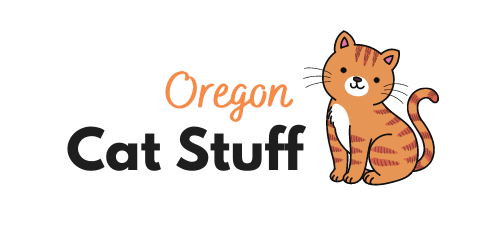How to integrate FaunaDB in React apps with Material UI - By LogRocket
The blog_recent_tag_posts function returns a sequence of blog post objects for a specified tag or...

Oregon Cat Stuff curates cat accessories from independent craftsman & artists and ships them to you! Oregon's finest catnip, handcrafted cat beds, custom run & playgrounds, catio's, and more! We also provide a searchable listing for adoptable cats across the country!
The Fetch API was a long time coming, and its introduction heralded a new era of live and interactive webpages. On 1 February 2022, the Node.js core team merged a pull request adding the Fetch API to Node. To understand why this is such a big deal, let’s explore how Fetch came to be and what this new addition means for Node.js developers.
Markdown is a language that is widely used by developers to write different types of content, like posts, blogs, and documents. If you haven’t used it, chances are you’ve already seen it in action. Markdown provides an easy syntax for writing and structuring content compared to regular HTML or other writing tools.
In this tutorial, we’ll build a modular React + TypeScript “library” with rich documentation, isolated component rendering, tests, and more (the quotation marks will soon be made clearer). It’s not a short article but once you’re done reading, you’ll not only build libraries differently but drastically change the way you structure any web project and collaborate on code. We’ll use Bit to develop and version multiple independent components, all in the same workspace.
React is one of the popular JavaScript libraries for frontend developers, it’s a powerful tool to easily build user interfaces and create web applications. There are a lot of free React resources that you can use to help you boost your productivity and build projects faster than ever. Templates and themes are the best way to save time when starting a React project. Especially if you just want to quickly build a project without focusing a lot on the design process.
Today, we’ll briefly discuss why it’s important to write automated tests for any software project, and shed light on some of the common types of automated testing. We’ll build a to-do list app by following the Test-Driven Development (TDD) approach. I’ll show you how to write both unit and functional tests, and in the process, explain what code mocks are by mocking a few libraries. I’ll be using a combination of RTL and Jest — both of which come pre-installed in any new project created with Create-React-App (CRA). To follow along, you need to know how to set up and navigate a new React project and how to work with the yarn package manager (or npm). Familiarities with Axios and React-Router are also required.
This article introduces Tailwind CSS, a CSS library that gives you all of the building blocks you need to build bespoke designs without opinionated styles. You’ll also learn how to seamlessly set up Tailwind CSS in a React project. With Tailwind CSS, you get to create the components that suit what you want or what you are working on. These components can be created by harnessing the power of the utility-first prowess of Tailwind CSS.
Writing authentication code without a framework or libraries available can take a ton of time to do right — not to mention the ongoing maintainance of that custom code. This is where Firebase comes to the rescue. Its ready-to-use and intuitive methods make setting up effective user identity management on a site happen in no time. This tutorial will work us through on how to do that: implementing user registration, verification, and authentication.
Important concepts every React developer should know and understand. This article is one of many others that seeks to explain the software design patterns and principles, concepts and basic features of React JavaScript library for a learner by a learner.
Asynchronous programming in javascript is possible and more efficient when working with technologies like AJAX and Fetch API which is used to make HTTP requests to files, services, and browser/server APIs internally or externally, and there are a few key concepts when working with Async code in javascript we have callbacks, promises, and Async/Await.
Throughout my tutorial series, you will learn how to make an e-commerce application from scratch with Next.js SSR (Server-Side Rendering), Stripe API, and Firebase. Let’s start your project, code, test, and deploy.
Vercel is a serverless cloud platform that allows developers to host websites and online services that launch instantaneously, grow automatically, and require no monitoring, all with minimal/no configuration. Vercel is a perfect choice for deploying your React applications easily providing comprehensive tools to build high-performance websites and applications. Vercel provides you with free domains (which contains the vercel.app suffix) to deploy your code on the live server.
Turning website design files into a combination of HTML, CSS and JavaScript is the bread and butter of many front-end web development jobs, but there’s a part of this work that doesn’t neatly fit in to tutorials on any specific topic. In this post, we’ll take a look at how to go from design to code, and why you might want to follow a process like this instead of just diving into code head-first
Storybook is an “open-source platform that allows you to document, view, and test many permutations of your JavaScript components within an isolated environment. Before I start to create a component, I first create stories for it in Storybook, then I start integrating it into my React app. The great thing about this is that we haven’t touched our main application at all. I don’t have to muck around with production configuration, environment variables, or running local API services.
Designing websites and apps nowadays necessitate using the best-in-class, complex technologies. It entails the creation of fully engaging web pages that aid in the efficient management of web content and the organization’s long-term performance. In this aspect, the arrival of React development tools is a blessing. Among the most extensively utilized front-end development technologies are React development services. It is made up of many libraries that assist developers in creating highly efficient multi-platform apps.
There are many cases in which developers need to consume APIs from the backend while using Create React App (CRA) to build an application. Because most client apps are hosted on different servers than the backend application, there are complications that arise as a result of requests being sent across both servers. CRA supports proxying to mitigate or entirely eliminate these issues. In this article, we will discuss what a proxy server is, why you should use a proxy server in development, and uses cases for proxying requests in a React application. Then, we will implement a real life example of setting up a proxy server in React.
Tailwind CSS is a utility-first CSS (Cascading Style Sheets) framework with predefined classes that you can use to build and design web pages directly in your markup. It lets you write CSS in your HTML in the form of predefined classes. In this article, we’ll learn about Tailwind CSS — a CSS framework that aids in building and designing web pages. We’ll start by explaining how to install and integrate Tailwind CSS in your project, see some practical applications, and also how you can create your custom styles and plugins.
The Firebase v.9 SDK introduces a new API surface that follows a modular approach, resulting in a change to the use of its services, one of which is Firestore database. Now we are left with the challenge of relearning how to perform operations like CRUD in the database.In this tutorial, we’ll cover how to carry out CRUD operations in Firestore by building a task manager. In this tutorial, we’ll cover how to carry out CRUD operations in Firestore by building a task manager.
The AWS Amplify team recently launched AWS Amplify Studio, a new visual development environment that lets front-end developers build full-stack apps with minimal coding while integrating Amplify’s powerful backend configuration and management capabilities. Amplify Studio helps automate the design implementation process, helping designers and developers to work better together, and ensuring that designs are implemented into the final product. Let’s dive in and check out the new capabilities.
Understanding how to fetch data into React applications is mandatory for every React developer who aims to build modern, real-world web applications. In this guide, we will cover the modern React data-fetching methods and learn how to handle our application’s state while fetching data. Furthermore, we will cover how to handle the application’s state when something goes wrong with the data.
Building applications with drag-and-drop functionality can be overly complicated using traditional JavaScript. React DnD is a set of utilities that simplifies transferring data between different parts of your application, allowing you to easily create high-performance interfaces with drag-and-drop functionality. React DnD is a perfect fit for apps like Trello, ProofHub, and ClickUp, which provide a UI for organizing your projects into different boards with drag and drop. In this tutorial, we’ll explore React DnD by building our own Trello clone.
In this article, we are going to see the modern ways of using arrays and doing operations with arrays. These methdos are far more convenient and will help you in writing code with less lines.
We’ll start by talking about the current lay of the land; what npm is, a bit about where it came from, and how we got here. From there, we’ll cover what Node itself is, followed by what package managers are in general, before actually working with npm. We’ll finish by installing Node and npm (if they’re not already), initializing a project to get an idea of how it works, and finally, installing a real-life npm project from GitHub with all its packages and commands.
There have been continuous efforts to deliver a unanimous rendering solution for React apps. By December 2020, the React team had introduced the idea of React Server Components — abbreviated as “RSC” in this post — a feature for their upcoming version, React 18. RSC is an experimental, opt-in feature that aims to cut out the work we usually give to the client by rendering everything, including the components, on the server. This approach produces zero bundle-sized components, consequently improving the load time of your web pages.
Hooks are game-changers. They have simplified React, made it neater, easier to write and debug, and also reduced the learning curve. Hooks are simply functions that allow you to hook into or make use of React features.
In this tutorial, we’ll go over the basics of building navbars in React. We’ll build a navbar that’s fixed to the top of the page, and the user will be able to switch between webpages like you can on a dashboard, for instance. We’ll then put all our newfound skills into practice by building a live sample app.
Meet Hydrogen: A React-based framework for building custom and creative storefronts gives you everything you need to start fast, build fast, and deliver the best personalized and dynamic customer experiences powered by Shopify’s platform and APIs.
To learn how to build a Next.js application, this tutorial details how to build a shopping cart web app for a fictional game store with the ability to add or remove items from the cart, view all products, view products by category, and more
Understanding Data Structures is helpful in all aspects of programming. A data structure is not just the way you structure your data, but also the logic associated with it. The way you insert data, what happens to it inside of it, and even the way you take data out of your structure. That, is where the real magic of data structures resides and the whole point for their existence. Otherwise, we would all be using Arrays for everything.
Serverless functions are pieces of server-side code run on cloud servers without the need of an actual backend as a part of the serverless computing architecture. Serverless functions (also known as cloud functions or functions-as-a-service (FaaS)) can be used to send emails, perform database queries, handle user authentication, manage form submissions, and more.
Front-end developers have to interact with private or public APIs whose method of authorization requires a secret key/API key that enables developers to use these APIs. The key(s) are important, hence the need to store/protect the key(s) arises. The environment variable does not protect the key(s) from anyone that knows their way around the dev-tools of their browser. That’s why we need to use our keys at server-side when we’re writing our API calls.
Created by Vercel, Next.js is a JavaScript framework based on React. With its ability to offer static and server rendering, its popularity quickly shot up amongst developers. What’s less known is that Next.js offers many ways to support CSS in your application. Whether you prefer utility CSS with its classes or prefer CSS-in-JS, Next.js has you covered. In this tutorial, you will discover a few ways to implement styling in your Next.js application.
.png)
What is the purpose of the Two-Column Image-Text Module? This module provides two columns view, having content on the left, the image on the right, CTA, or Link on the bottom. If desired, columns can be reversed.
.png?width=300&height=300&name=Untitled%20design%20(3).png)
.png?width=220&height=220&name=Untitled%20design%20(6).png)
.png?width=200&height=200&name=Untitled%20design%20(5).png)
.png?width=220&height=220&name=Untitled%20design%20(7).png)


Single Card Module provides a mini card for especially drag and drop areas. Background image or only color can be set. It has a special hover effect. If desired, a logo or icon may be upload on top of the card. Also, there is a nice fade-up animation when scrolling.
Single Card Module provides a mini card for especially drag and drop areas. Background image or only color can be set. It has a special hover effect. If desired, a logo or icon may be upload on top of the card. Also, there is a nice fade-up animation when scrolling.
Single Card Module provides a mini card for especially drag and drop areas. Background image or only color can be set. It has a special hover effect. If desired, a logo or icon may be upload on top of the card. Also, there is a nice fade-up animation when scrolling.
Single Card Module provides a mini card for especially drag and drop areas. Background image or only color can be set. It has a special hover effect. If desired, a logo or icon may be upload on top of the card. Also, there is a nice fade-up animation when scrolling.
What is the purpose of the Two-Column List View Module? In the beginning, this module provides two columns grid, having a logo on the top, content on the middle, CTA or Link on the bottom. The grid view can be adjusted as left or center. Also, if desired, cards can be duplicated by following Two-Column List View Module > Cards > +Add. Moreover, by clicking into the Module Controller, you can edit the font color and the background of the cards & module, changing the background image of each card, you might remove or add the borders, lines, and even arranging the spaces.
What is the purpose of the Two-Column List View Module? In the beginning, this module provides two columns grid, having a logo on the top, content on the middle, CTA or Link on the bottom. The grid view can be adjusted as left or center. Also, if desired, cards can be duplicated by following Two-Column List View Module > Cards > +Add. Moreover, by clicking into the Module Controller, you can edit the font color and the background of the cards and module, changing the background image of each card, you might remove or add the borders, lines, and even arranging the spaces.
What is the purpose of the Two-Column List View Module? In the beginning, this module provides two columns grid, having a logo on the top, content on the middle, CTA or Link on the bottom. The grid view can be adjusted as left or center. Also, if desired, cards can be duplicated by following Two-Column List View Module > Cards > +Add. Moreover, by clicking into the Module Controller, you can edit the font color and the background of the cards and module, changing the background image of each card, you might remove or add the borders, lines, and even arranging the spaces.
Content Banner is a banner having an image or logo on the top, text on the middle, and bottom on the link or CTA. Generally, it uses impressive background images and a full-width feature. It has also a parallax scrolling effect.
Content Slider Module is a slider having an image on the left, content on the right, and CTA or Link on the bottom.
What is the purpose of the Content Slider Module? It is a slider having an image on the left, content on the right, and CTA or Link on the bottom. If desired, columns can be reversed.
What is the purpose of the Content Slider Module? It is a slider having an image on the left, content on the right, and CTA or Link on the bottom. If desired, columns can be reversed.

What is the purpose of the Two-Column Image-Text Module? This module provides two columns view, having content on the left, the image on the right, CTA, or Link on the bottom. If desired, columns can be reversed.

What is the purpose of the Two-Column Image-Text Module? This module provides two columns view, having content on the left, the image on the right, CTA, or Link on the bottom. If desired, columns can be reversed.
The headline and subheader tells us what you're offering, and the form header closes the deal. Over here you can explain why your offer is so great it's worth filling out a form for.
Gallery View Module consists of full images. Provides 3 different structures having the main part ( top wide image ), two-column part ( bottom ), and side ( right ) part. Also if any text is written on an image, the overlay is automatically enabled and overlay color can be changed. If desired, CTA or extra images can be added. The new zoom-in feature enables a bigger view with a pop-up.
Content Banner is a banner having an image or logo on the top, text on the middle, and bottom on the link or CTA. Generally, it uses impressive background images and a full-width feature. It has also a parallax scrolling effect.
It is a slider with a special hover effect ( gets vertically bigger with a nice animation ) having three columns view. Each column has two parts as an image on the top and content on the bottom. If desired, CTA or Link can be added, and also it can be increased the number of extra slides.
Content Banner is a banner having an image or logo on the top, text on the middle, and bottom on the link or CTA. Generally, it uses impressive background images and a full-width feature. It has also a parallax scrolling effect.
Single Card Module provides a mini card for especially drag and drop areas. Background image or only color can be set. It has a special hover effect. If desired, a logo or icon may be upload on top of the card. Also, there is a nice fade-up animation when scrolling.
Single Card Module provides a mini card for especially drag and drop areas. Background image or only color can be set. It has a special hover effect. If desired, a logo or icon may be upload on top of the card. Also, there is a nice fade-up animation when scrolling.
Single Card Module provides a mini card for especially drag and drop areas. Background image or only color can be set. It has a special hover effect. If desired, a logo or icon may be upload on top of the card. Also, there is a nice fade-up animation when scrolling.
Single Card Module provides a mini card for especially drag and drop areas. Background image or only color can be set. It has a special hover effect. If desired, a logo or icon may be upload on top of the card. Also, there is a nice fade-up animation when scrolling.
The blog_recent_tag_posts function returns a sequence of blog post objects for a specified tag or...
Content Banner is a banner having an image or logo on the top, text on the middle, and bottom on the link or CTA. Generally, it uses impressive background images and a full-width feature. It has also a parallax scrolling effect.